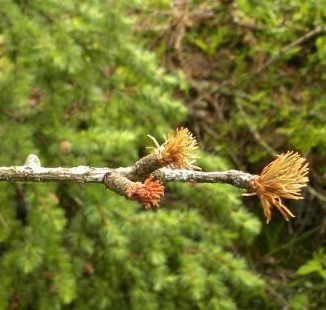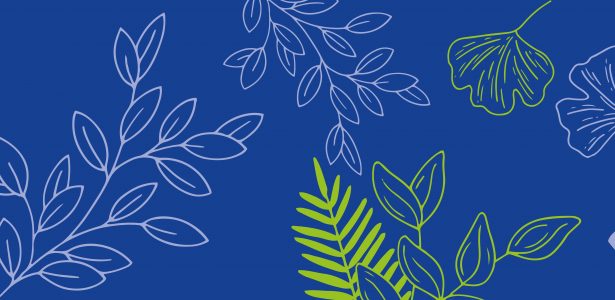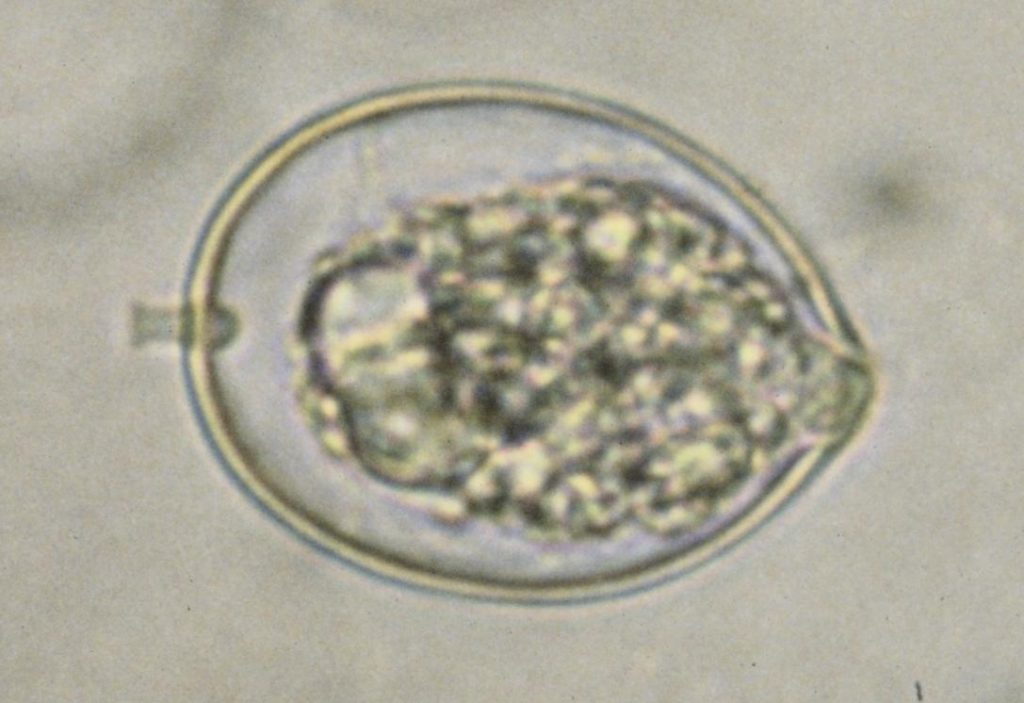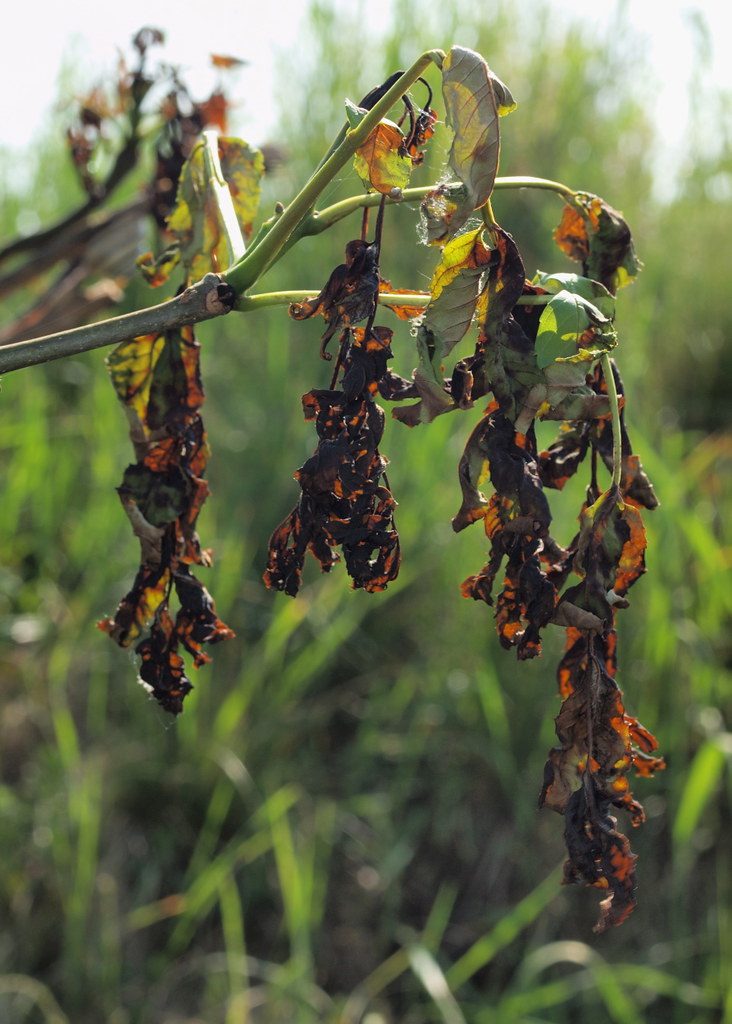Worldwide pests and diseases damage or kill tree species in forests and urban areas. This threat is expected to increase with the changing conditions. Climate change causes the increase of threats of pests and diseases, which are extremely challenging due to their unpredictability. Besides the increased risk of pests and diseases infesting trees, the challenges include recently observed changes in growth rates, phenology, composition, and the shift of species distribution. The distribution of pests and diseases in Europe will highly likely shift from southwest to northeast and increase damages in forest ecosystems under climate change. Furthermore, an increase in winter temperatures impacts the survivability of some pest species and the period in time that species can have an effect on trees. Consequently, the magnitude of biotic threats may lead to a transformation of major vegetation types in the Alpine Space.
Non-native tree species are often preferred over native tree species, because of the reduction of pest damage. The black walnut ( (Juglans nigra L.), for example, is considered to be very resistant to pests and diseases in Europe, while, compared to its native range in the USA, the tree species is highly vulnerable to more than 300 pest species. However, this phenomenon might be true under the current climatic conditions for some non-native tree species, but the appearances are deceptive. Although non-native tree species have been separated from their natural enemies, it is observed that the natural insect pests, for example, follow the pathway of their tree host and that new interaction of local (indigenous) pests and diseases and the non-native host tree can cause damages. Recently many researchers observed that native insects do attack the non-native tree species introduced to Europe. Over 400 insect species were found to be able to feed on introduced non-native tree species as new host plants. However, the interactions remain very species-specific and require detailed knowledge of ecological interactions.
Therefore it is highly recommended to be aware that besides climate change and extreme events, European pests and pathogens, as well as the involuntary introduction of non-native pests and pathogens, are potential threats to non-native tree species as well as to native trees. Further, it is recommendable to consider susceptibility to native insect pest species and diseases in site-specific risk assessments to be conducted prior to the introduction of the non-native tree species to a new area. The increase of the overall tree diversity is an often discussed measure to diversify the risk of massive damages to forest stands or urban green infrastructure.
Examples of pests and diseases on non-native trees
The following selection of non-native tree species and their description of potential pests and diseases demonstrates a first impression of the highly variable interactions of biotic threats for non-native tree species. However, the intensity and probability of the potential biotic threat differ among local conditions, the geographic range, and the management.
Larix kaempferi (LAMB.) CARR. – Japanese larch

Compared to the European larch, it is more resistant to larch canker and larch moth. The pathogen Phytophthora ramorum was responsible for tree death in a Larix kaempferi plantation in Great Britain. Needle cast causes considerable growth losses in Japan. Lasioma melania, the larch cone fly, is one of the most dangerous pest species affecting larches in Eurasia and is well-established in Western Europe today. Armillaria ostoyae is a root disease found in South Korea.
Liriodendron tulipifera L. – Tuliptree
So far, no specific pests or diseases are known. Since the genus Liriodendron comprises only two species, the introduction of genus-specific pests is unlikely. Problems may occasionally arise from infestation with fungi from the genera Botryosphaeria, Armillaria, and Verticillium, from wilt, mildew, and canker, and from various pests such as aphids and scale insects. In addition, mice and rabbits may cause damage to tuliptree bark, buds, and seedlings. Young shoots are often browsed by game, and abiotic influences such as late frost, snow breakage, snow pressure, and soil compaction affect the species as well.
Pseudotsuga menziesii (Mirb.) Franco – Douglas-fir

(Douglas-fir seed chalcid)
Douglas fir needles are affected by two fungi, Phaeocryptopus gaeumannii (Rohde) Petr. and Rhadocline pseudotsugae H. Sydow. Both cause needle cast and a significant reduction in tree growth. Infection with P. gaeumannii results in a yellowing of foliage and growth decrease. At present, the insect known as Douglas fir seed chalcid (Megastigmus spermotrophus Wachtl), which is presumably co-introduced with host seeds, is considered the primary seed pest in Douglas fir seed plantations. Attacks of Diplodia sapinea have so far been limited by the absence of a vector able to transmit the fungus from pines to Douglas firs. This may change with the introduction of the seed bug Leptoglossus occidentalis, however, which has been shown to be a reliable vector for D. sapinea. Root rot caused by Heterobasidion spp. is also noticeable. Tree susceptibility varies depending to the type of forest, with damage mostly associated with H. annosum s.s.
Thuja occidentalis (L.) – Northern white cedar

In its native range, the northern white cedar is generally resistant to rot and insects. However, there are some fungi and insects that can cause damage. Kabatina thujae is a fungus that causes the death of branches and twigs, and Armillaria mellea can affect the species as well. The jewel beetle (Lamprodila festiva) has been observed on Thuja occidentalis in Romania. This insect has already been recognized as new invasive pest in some European countries and could increasingly infest the Alpine region in the future.
Robinia pseudoacacia L. – Black locust

Phytosanitary problems related to the black locust are still largely unknown in the Alpine space. While megaherbivores are of minor significance in Europe, the species is also host to a wide range of fungi. In terms of insect pests, the North American black locust gall midge (Obolodiplosis robiniae) specific to Robinia is spreading rapidly throughout Europe. Insect attacks appear to be confined to parks or ornamental trees and have not been detected in forest stands.
Quercus rubra L. – Red oak
In Europe, the northern red oak seems to be less prone to herbivores and fungi than in its native range, where it is grazed by ungulates and insects and infected by Phytophthora and oak wilt. In general, the species is less susceptible to pathogens and seed predation than native tree species. On humid sites, however, root rot (infestation with Armillaria) is frequently observed. Deer browsing is considered one of the most important limiting factors for natural red oak regeneration.
Further resources:
EPPO – European and Mediterranean Plant Protection Organization
The Invasive Species Compendium (ISC) is an encyclopedic resource that brings together a wide range of different types of science-based information to support decision-making in invasive species management worldwide. Available at: https://www.eppo.int/
CABI – Invasive Species Compendium
The Invasive Species Compendium (ISC) is an encyclopedic resource that brings together a wide range of different types of science-based information to support decision-making in invasive species management worldwide. Available at: https://www.cabi.org/isc/about
Waldwissen.net – Article [in German]: Gastbaumarten
Nichtheimische Baumarten werden von den einen euphorisch befürwortet, von den anderen verteufelt. Aber wo liegt die Wahrheit? Das Wissen darüber zu erforschen und die Ergebnisse zu vermitteln ist Ziel einer Expertengruppe.Available at: https://www.waldwissen.net/de/waldwirtschaft/waldbau/waldumbau/gastbaumarten
Scientific References
- Branco, M., Brockerhoff, E. G., Castagneyrol, B., Orazio, C. & Jactel, H. Host range expansion of native insects to exotic trees increases with area of introduction and the presence of congeneric native trees. J. Appl. Ecol.52, 69–77 (2015).
- Pötzelsberger, Elisabeth, Martin M. Gossner, Ludwig Beenken, Anna Gazda, Michal Petr, Tiina Ylioja, Nicola La Porta et al. “Biotic threats for 23 major non-native tree species in Europe.” Scientific data 8, no. 1 (2021): 1-8. Available at: https://www.nature.com/articles/s41597-021-00961-4
- Crous, Casparus J., Treena I. Burgess, Johannes J. Le Roux, David M. Richardson, Bernard Slippers, and Michael J. Wingfield. “Ecological disequilibrium drives insect pest and pathogen accumulation in non-native trees.” AoB Plants 9, no. 1 (2017): plw081. Available at: https://academic.oup.com/aobpla/article/9/1/plw081/2737455
- Nicolescu, Valeriu-Norocel, Károly Rédei, Torsten Vor, Jean-Charles Bastien, Robert Brus, Tibor Benčať, Martina Đodan et al. “A review of black walnut (Juglans nigra L.) ecology and management in Europe.” Trees 34 (2020): 1087-1112. Available at: https://link.springer.com/content/pdf/10.1007/s00468-020-01988-7.pdf





